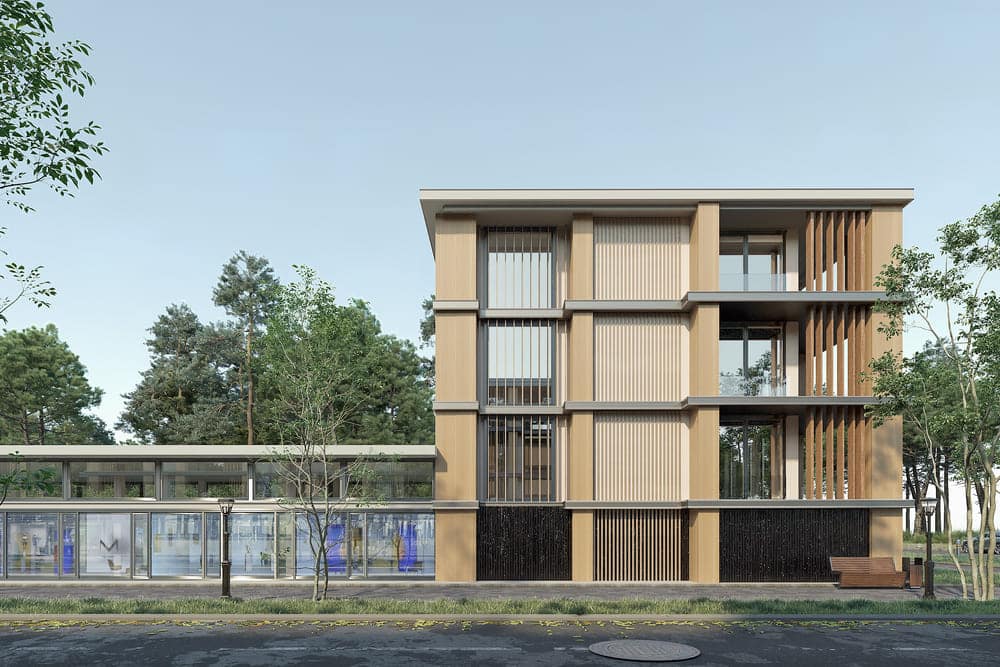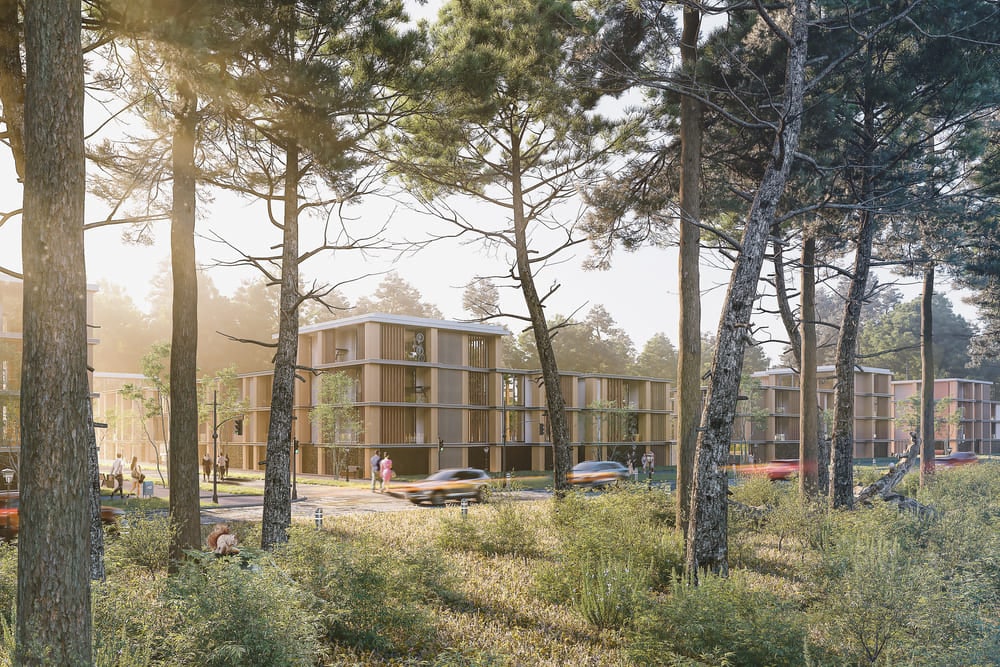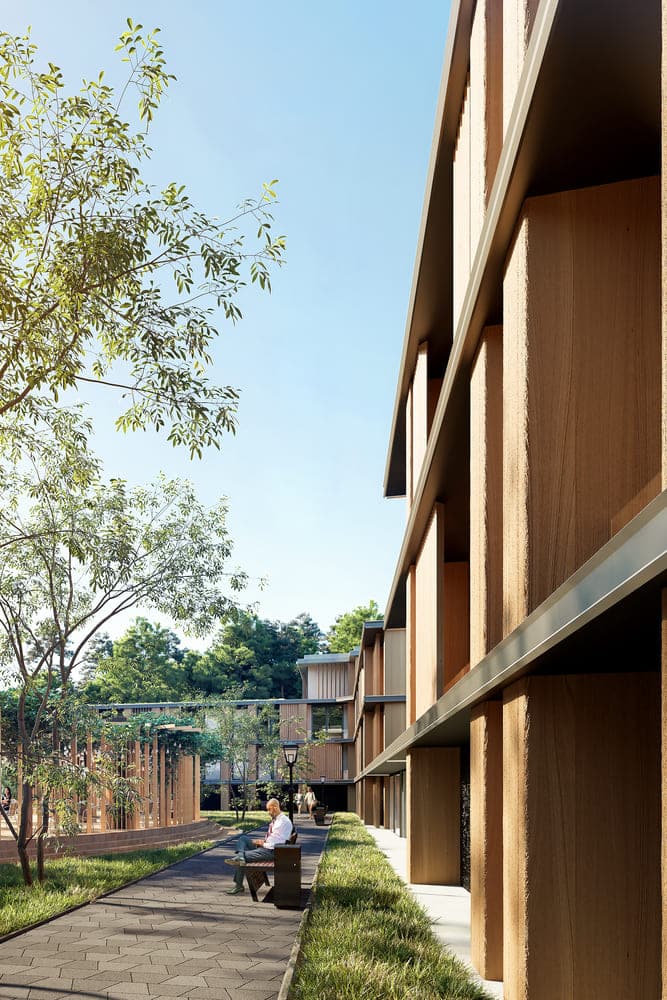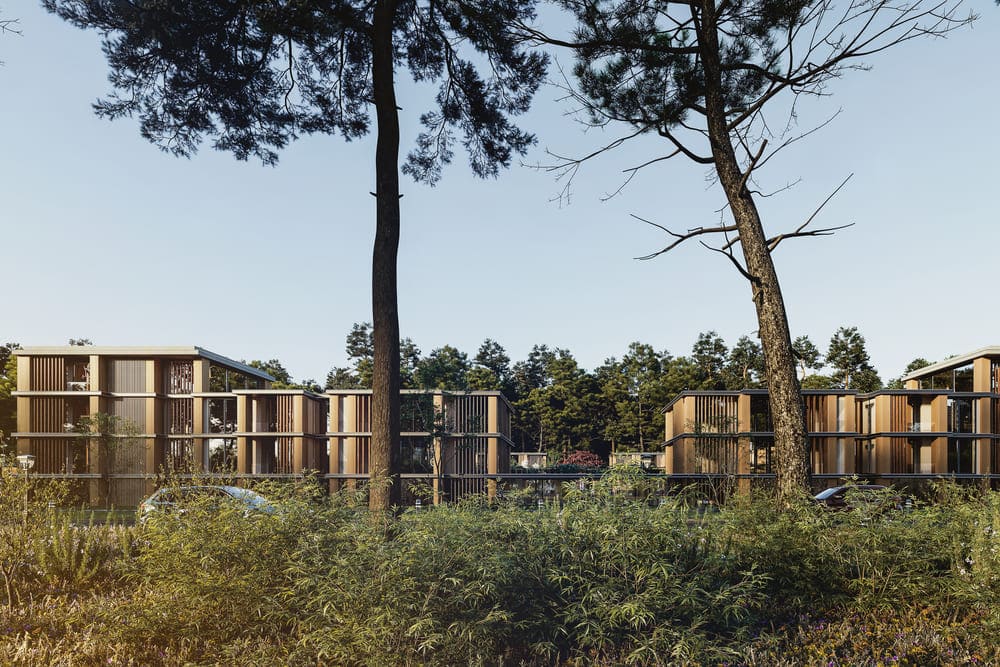Introduction to 3D Modeling in Architecture
The realm of architecture has undergone a profound transformation with the advent of 3D modeling. This shift from traditional drafting methods to digital design has revolutionized how architects visualize and create structures and significantly impacted the entire construction industry. In Architectural 3d exterior rendering, specialized software is used to create a mathematical representation of a three-dimensional building or structure. This technology allows architects and designers to visualize buildings virtually, offering a more accurate and detailed perspective than traditional 2D drawings.
The historical evolution of architectural design from hand-drawn blueprints to digital 3D models marks a significant milestone in the field. While valuable for their time, traditional methods could have improved their ability to convey the full scope and detail of a design. With the introduction of 3D modeling, architects could explore and manipulate their designs in a virtual environment, leading to more innovative and efficient workflows.
The Current State of Product Rendering
Today, 3D modeling is an integral part of architectural design, playing a crucial role in conceptualizing and realizing architectural projects. Modern rendering techniques, such as photorealistic visualization and virtual walkthroughs, have opened up new possibilities for architects to communicate their ideas more effectively. These techniques allow for a more immersive experience, enabling clients and stakeholders to visualize the end product in a previously impossible way.
Case studies of iconic buildings shaped by 3D modeling highlight the technology’s impact on architectural design. For instance, the Beijing CR Land Galleria Shopping Center, renovated by Kokaistudios, showcases how 3D modeling can breathe new life into urban spaces. The project involved a comprehensive redesign of a neglected Beijing street, transforming it into a vibrant public space. 3D modeling allowed the architects to visualize and plan the renovation accurately, ensuring the new design would be aesthetically pleasing and functional.

In conclusion, the current state of 3D modeling in architecture represents a significant advancement in the field. Technology has become an essential tool for architects, enabling them to create more detailed, accurate, and innovative designs. As 3D modeling continues to evolve, it will undoubtedly play an even more significant role in shaping the future of architectural design.
Technological Advancements in 3D Architectural Modeling
The landscape of 3D architectural modeling is continually reshaped by technological advancements, bringing forth tools and techniques that redefine the boundaries of design and construction.
Software Innovations: From AutoCAD to Advanced BIM: The journey from essential CAD (Computer-Aided Design) programs like AutoCAD to more sophisticated BIM (Building Information Modeling) software represents a significant leap in architectural design capabilities. BIM technology, exemplified by software like Autodesk Revit and Graphisoft ArchiCAD, goes beyond geometric modeling. It incorporates detailed information about each building component, allowing architects and engineers to analyze various aspects of a structure, such as energy performance, material requirements, and cost estimations, long before the construction phase begins. For instance, using BIM software, architects can simulate the energy efficiency of a building and make adjustments to the design to optimize its performance.
Integration of Virtual Reality and Augmented Reality: Virtual Reality (VR) and Augmented Reality (AR) technologies have taken 3D modeling a step further by immersing users in a virtual environment or overlaying digital information onto the physical world. VR allows clients and stakeholders to ‘walk through’ a building before it’s built, providing a sense of scale and spatial awareness that 2D drawings cannot. Conversely, AR can project a 3D model into a real-world setting, offering a unique perspective on how a new structure will fit into an existing environment. For example, firms like Zaha Hadid Architects have utilized VR to present fully immersive representations of their designs, enhancing client engagement and decision-making processes.
The Role of AI and Machine Learning in Design Optimization: Artificial Intelligence (AI) and Machine Learning are beginning to influence 3D architectural modeling, automating complex tasks and providing data-driven insights. AI algorithms can optimize designs for various parameters, including structural efficiency, material usage, and environmental impact. Machine learning can analyze vast amounts of data from past projects to identify trends and suggest improvements. Integrating AI into architectural design streamlines workflows and opens new possibilities for sustainable and efficient building practices.
3D Modeling in Sustainable Architecture and Urban Planning

Eco-friendly Design and Energy Efficiency: 3D modeling tools enable architects to design sustainably. Architects can create designs that minimize energy consumption and reduce the carbon footprint by simulating different environmental conditions, such as sunlight, wind patterns, and thermal performance. For instance, using 3D modeling in the design of the Shanghai Tower, China’s tallest building, contributed to its LEED Platinum certification by optimizing the building’s wind resistance and energy efficiency.
Smart City Planning with 3D Models: In urban planning, 3D models are instrumental in designing smart cities. They allow planners to visualize urban layouts, analyze traffic flow, and plan infrastructure in a way that promotes sustainability and efficient resource use. The use of 3D city models in planning the redevelopment of the King’s Cross area in London is an excellent example of how 3D modeling can aid in creating urban spaces that are both functional and sustainable.
Case Studies: Sustainable Projects and Green Buildings: Numerous case studies demonstrate the effectiveness of 3D modeling in sustainable architecture. The Edge in Amsterdam, often cited as one of the world’s most sustainable office buildings, utilized BIM for its design and construction. The building features a sophisticated energy management system, rainwater harvesting capabilities, and an array of solar panels, all optimized through 3D modeling techniques.
Challenges and Future Directions in 3D Architectural Modeling

Overcoming Technical and Skill-Related Barriers: The complexity of advanced 3D modeling software requires a high level of technical skill and training. This can be a barrier for firms that need more resources to train their staff or hire specialists. Additionally, integrating new technologies like VR and AI into the architectural workflow demands continuous learning and adaptation.
The Future of 3D Modeling: Predictions and Emerging Trends: The future of 3D architectural modeling is likely to see even more integration of advanced technologies. Cloud computing, for instance, could enable more collaborative and accessible modeling processes. The development of more intuitive AI and machine learning algorithms is expected to automate design tasks further and provide deeper insights into building performance.
Preparing for the Next Generation of Architects: As the field evolves, educational institutions and professional training programs must adapt to prepare the next generation of architects. This includes teaching technical skills and fostering an understanding of how technology can be used to create more sustainable, efficient, and innovative architectural solutions.
In conclusion, 3D modeling has become an indispensable architectural tool, driving innovation and efficiency in design processes. As technology advances, it will undoubtedly open new horizons for architects, enabling them to create structures that were once thought impossible. The future of architecture, shaped by 3D modeling, promises buildings and spaces that are aesthetically pleasing, sustainable, efficient, and more in tune with the needs of both people and the planet.
Conclusion
3D modeling has indisputably transformed the field of architecture, offering tools that have revolutionized the way architects design, visualize, and execute their projects. From enhancing visualization capabilities to enabling more efficient and sustainable design practices, 3D modeling has become an essential component of modern architectural work.
Integrating technologies such as BIM, VR, AR, and AI into architectural modeling has not only streamlined the design process but also opened up new possibilities for innovation in building design and urban planning. These technologies have allowed architects to push the boundaries of creativity and functionality, leading to the development of buildings and spaces more responsive to human needs and environmental sustainability.
However, the journey forward has its challenges. The architectural industry must continue to address the technical and skill-related barriers that come with advanced 3D modeling tools. Moreover, as technology advances rapidly, the industry must remain adaptable and forward-thinking.
The future of architecture, shaped by the ongoing evolution of 3D modeling, holds immense promise. It envisions an era where buildings and urban spaces are aesthetically pleasing but sustainable, efficient, and harmonious with the needs of both people and the planet. As we embrace these technological advancements, the role of architects becomes ever more crucial in building an innovative, responsible, and inclusive future.








